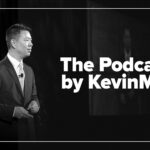In a major advance in medicine, a man with type 1 diabetes is making his own insulin again, this time using genetically engineered donor islet cells. Researchers provided the new cells with an invisibility cloak to allow them to escape immune detection. After three months of follow-up, his body had not only accepted the new tissue but was quietly producing insulin. This single-patient proof-of-concept study gives hope to the millions of people who live with type 1 diabetes. Swedish researchers, led by Dr Per-Ola Carlsson, published their case report in the New England Journal of Medicine. Unlike traditional islet transplants, which require heavy-duty immunosuppressants, this approach rewires the donor cells so the immune system simply ignores them. It could help doctors overcome the biggest challenge to curing type 1 diabetes: their patients’ immune system.
The therapy
The team purified insulin-producing islet cells from the pancreas of a donor. Using Nobel Prize-winning CRISPR technology, they switched off two genes: B2M and CIITA. The genes code for immune system proteins that are involved in flagging tissue for immune attack. Leaving nothing to chance, they added the gene for CD47 into the islet cells. CD47, known as the “don’t eat me” protein, functions as an invisibility cloak to protect the islet cell from consumption by macrophages, the first step in flushing unwanted cells from the body. Several tumors exploit CD47 to escape detection and grow in the body. The gene-edited cells, estimated at nearly 80 million, were injected into the forearm of a 42-year-old man who had been diagnosed with type 1 diabetes as a child. He received no anti-inflammatory, steroid, or immunosuppressive drugs over the course of the experiment. The investigators monitored him for twelve weeks using diagnostic imaging, food challenges, and measured common markers of diabetes control.
What happened?
Doctors tracked insulin production by following C-peptide, a tell-tale insulin byproduct that is proof that the body is making its own insulin. “The results are encouraging: We’re seeing survival and function of the transplanted cells, with absolutely no sign of immune rejection,” said Dr. Per-Ola Carlsson. C-peptide levels in the volunteer were undetectable at the beginning of the experiment, which is typical of someone with type 1 diabetes. However, they rapidly rose after the injection and by twelve weeks had stabilized, suggesting that the patients’ homemade insulin was now in constant production. Better yet, the team could not detect an immune reaction in his body; the new gene-edited islet cells had been accepted. Tenderness around the injection site was the only reported side effect. Other reported benefits included a 42 percent drop in hemoglobin A1C, a diabetic marker that measures longer-term blood sugar control. The patient was subjected to a glucose meal and showed a perfectly normal glucose and insulin response to the food challenge.
What’s next?
The paper is a case report with just one patient. Clinical trials will need to be conducted in larger, more diverse patient populations before a safety and efficacy profile can be determined for the procedure. Because this was an untested therapy, the investigators limited the dose to just 7 percent of what an adult with type 1 diabetes would typically need to get off shop-bought insulin completely. Future trials will scale up the dose and extend the observation window to get a better idea of the long-term safety and benefits of this approach.
More good news from the other side of the world
This gene-editing approach now joins stem cell technology as a potential option for treating type 1 diabetes. Research done at Peking University has reported creating stem cells from the fat tissue of a 25-year-old woman with type 1 diabetes and turning them into functioning islet cells. Once implanted back into the patient, the cells began producing insulin without an immune response. Within 2.5 months the patient was off insulin, and had remained insulin-free for over a year. Much like the Swedish approach, more testing will need to be done on this competing technology.
In medical science, competition is good. Many new technologies do not make it to market because of serious side effects or disappointing results in larger populations. Whichever technology prevails, this is good news for people living with type 1 diabetes. The light at the end of the tunnel may be closer than they realize.
Cliff Dominy is a medical writer.



















